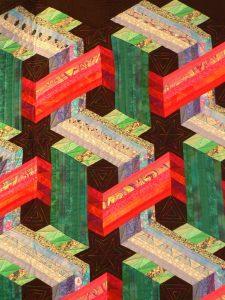11.6 Looking Ahead: Immigrant Families
There is a great deal of discussion in this country about the politics, legality, and ethics of our immigration practices. In this text, we discuss some of the aspects that directly affect immigrant families and their descendants who are living in the United States right now. As discussed in Chapter 1, laws have primarily been designed to foster inexpensive labor (the immigrants) to benefit the existing landowners, business owners, and consumers already residing in the country. Regardless of employment status, wage, and purpose for coming to this country, these families have the same needs as other residents. In addition, they are navigating new structures such as the health care and insurance system, differing government practices, and perhaps a new language at the same time as they are caring for their children, accessing schooling, finding a place to live, and fostering healthy family routines. It is difficult to also advocate for needed services, as pictured in Figure 11.11.

Figure 11.11. Vietnamese members speak to a state representative at the Washington State Capitol.
The authors view all families, regardless of documentation status, as “contemporary families in the United States,” the subjects of this course and this textbook. We believe that the well-being of each family in the United States is of value in and of itself. In addition, every family affects all the other families within the spheres of the neighborhood, the places of worship, the retail establishments, schools, parks, and employment. When reading about the laws that affect immigrant families, and the ways in which employment and citizenship practices reflect a lack of justice, think about these families’ needs and rights just as you would for any other family.
Interwoven Families
When we think about immigrant families, we cannot separate them from all of us. As the quilt pictured in Figure 11.12, we are all not only connected, but we support each other in complex and in ways that are sometimes difficult to decipher.

Figure 11.12. Interwoven patterns are fascinating to study and complicated to understand.
When we talk about how immigrant families affect other families in the United States, we must understand that immigrant families are deeply interwoven into communities, schools, for-profit businesses, services, and all aspects of society. Kinship groups themselves can be mixed, made up of recent immigrants, second-generation citizens, Indigenous people, and citizens whose families have lived in the United States for hundreds of years. It’s difficult to unwind the complexity of these relationships, but it is critical to understand that we are intertwined and to continue to educate ourselves about these economic, familial, and societal relationships.
Licenses and Attributions for Looking Ahead: Immigrant Families
Open Content, Original
“Looking Ahead” by Elizabeth B. Pearce. License: CC BY 4.0.
Open Content, Shared Previously
Figure 11.11. “Vietnamese Members Speak to Representative Gerry Pollet” by OneAmerica. License: CC BY-NC-SA 2.0.
Figure 11.12. “Quilt – Stars and Interwoven Steps” by Ramson. License: CC BY-NC-SA 2.0.
